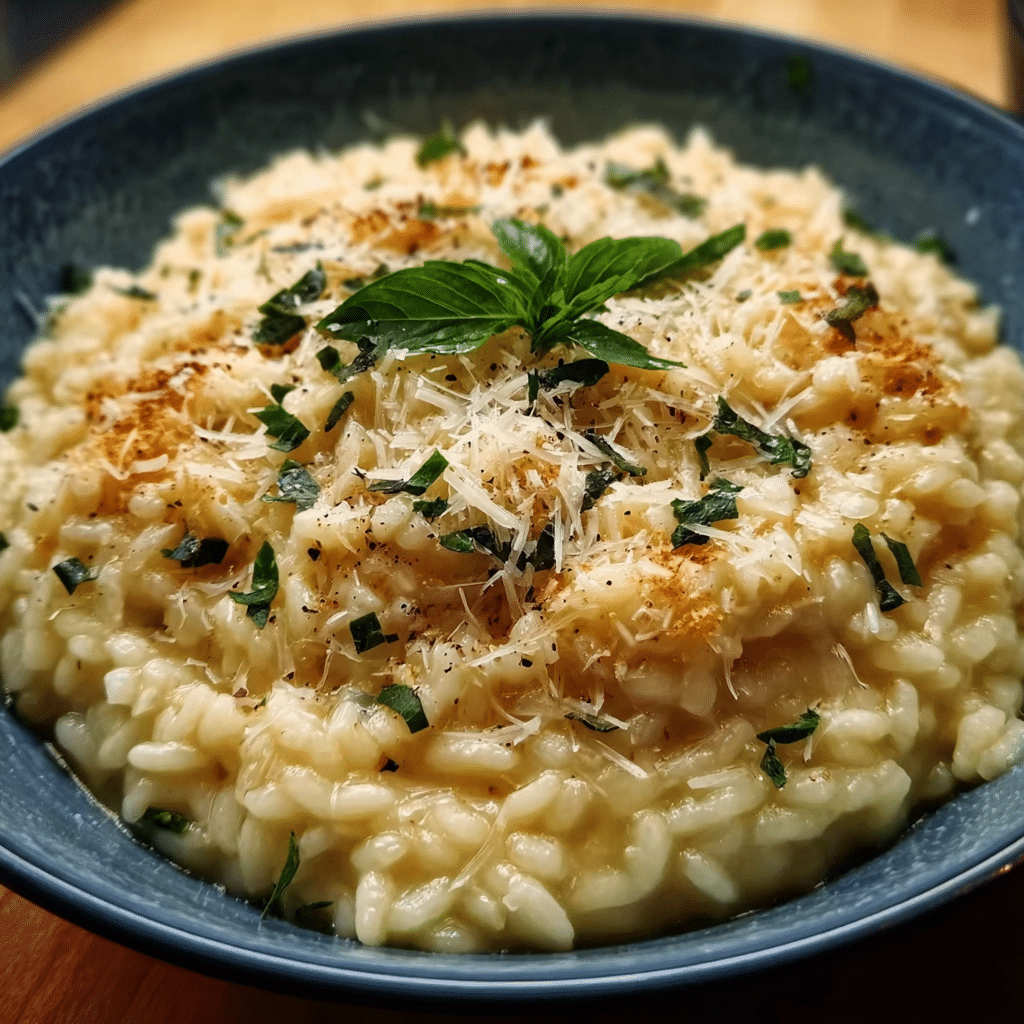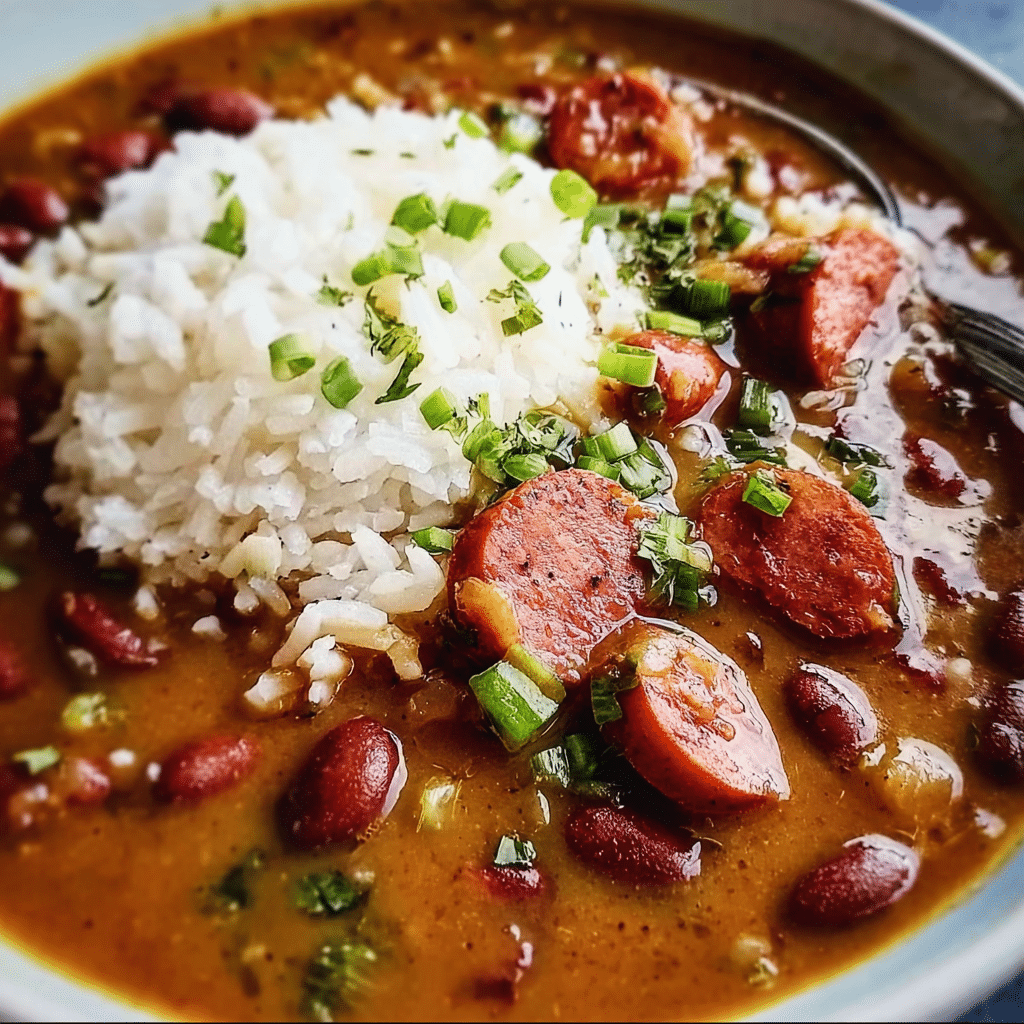High protein stuffed pepper soup is one of those comforting dishes that feels like a warm hug on a chilly evening. I vividly remember the first time I stumbled upon this recipe. It was a brisk autumn day, and I was rummaging through my pantry, desperate for a warm, nutritious meal that would also satisfy my family’s cravings. With bell peppers sitting idly on my countertop and a few leftover ingredients from the week, I improvised, combining the essence of stuffed peppers with the heartiness of soup. The result was a delightful concoction that not only warmed our bellies but also brought smiles to our faces.

This dish is rooted in the classic stuffed pepper recipe, which has been a staple in various cuisines for centuries. Traditionally, stuffed peppers are filled with a mixture of rice, meat, and spices, then baked until tender. However, in my version, I decided to take a different route by transforming the concept into a soup. This adaptation not only made the dish more accessible to busy families but also allowed for a more significant focus on the high protein content, thanks to the addition of legumes, lean meats, and quinoa. It was a game-changer for our dinner table.
The Story Behind This Recipe
The beauty of high protein stuffed pepper soup lies in its versatility. Growing up, I watched my mother make stuffed peppers on special occasions. The entire kitchen would fill with the aromatic scents of simmering tomatoes and herbs. We all gathered around the table, eagerly awaiting the first bite. Those moments were not just about the food; they were about family, laughter, and love. When I created my version of this dish, I wanted to capture that spirit while adapting it to our modern, fast-paced lives.
What makes this recipe special is how it blends the traditional flavors of stuffed peppers with the ease of a soup. The high protein stuffed pepper soup is perfect for those evenings when you don’t have time to spend hours cooking but still want something that nourishes both the body and soul. The ingredients come together quickly, making it an ideal option for busy families looking for quick dinner solutions without sacrificing flavor or nutrition.
This soup is also seasonally relevant. As the leaves begin to change and the air turns crisp, there’s something about a warm bowl of soup that feels just right. It’s comforting and hearty, making it perfect for fall dinners or cozy winter nights. Moreover, you can easily adapt the recipe with seasonal vegetables, ensuring it never feels repetitive.
For me, this dish holds a special emotional connection. It’s more than just a recipe—it’s a reminder of those family gatherings, the joy of cooking together, and the warmth of home. Every time I prepare high protein stuffed pepper soup, it transports me back to those cherished moments, and I hope it does the same for you. In this article, I promise to share not just the recipe but also tips, variations, and personal anecdotes that will inspire you to make this dish a beloved part of your family’s table.
The Rich History and Cultural Significance of high protein stuffed
The rich history and cultural significance of high protein stuffed dishes can be traced back many centuries. Stuffed peppers, in particular, have roots in various culinary traditions around the world. From the Mediterranean to Latin America, cultures have embraced the idea of filling vegetables with a mixture of ingredients to create a hearty meal. The origins of stuffed peppers can likely be traced back to ancient civilizations, where farmers would use local produce to create satisfying meals from the harvest.
Origins and History
Over time, the concept of stuffed peppers has evolved. With the rise of health-conscious eating, many home cooks have started to experiment with high-protein ingredients to make the dish more nutritious. Enter high protein stuffed pepper soup, a modern take that not only retains the essence of the original dish but also caters to today’s dietary preferences. By incorporating protein-rich elements like quinoa, beans, and turkey or chicken, this soup offers a balanced meal that satisfies hunger and boosts energy levels.
Cultural Significance
In many cultures, stuffed peppers are served during special occasions and family gatherings. For instance, in Mexican cuisine, stuffed peppers known as “chiles rellenos” are often filled with cheese and served during festive celebrations. This dish is not only a culinary delight but also a symbol of the community, with families often coming together to prepare and enjoy the meal. Similarly, in Mediterranean cultures, stuffed peppers are a common dish served at family dinners, often accompanied by bread and a glass of wine.
As global culinary practices have intermingled, high protein stuffed pepper soup has found its place in the hearts of many. It’s become a symbol of adaptability, showcasing how traditional recipes can be transformed to fit modern lifestyles while maintaining their cultural essence. This evolution speaks to the creativity of home cooks and chefs alike, who strive to keep traditions alive while making them relevant for contemporary audiences.
Nutritional Benefits
From a nutritional standpoint, high protein stuffed pepper soup is a powerhouse meal. The combination of lean meats, legumes, vegetables, and spices offers a wealth of health benefits. Packed with protein, this dish supports muscle growth and repair, making it an excellent choice for active families. The high fiber content from the vegetables and legumes aids digestion and keeps you feeling full longer, which is particularly beneficial for those watching their weight or trying to maintain a balanced diet.
Moreover, the variety of vegetables in the soup adds essential vitamins and minerals. Bell peppers, in particular, are rich in vitamin C and antioxidants, supporting immune health and overall well-being. Combining these elements not only creates a dish that is delicious but also nutritious, making high protein stuffed pepper soup a fantastic choice for families seeking quick, healthy meal options.
In conclusion, the high protein stuffed pepper soup not only honors its cultural roots but also adapts beautifully to modern dietary needs, making it a delightful addition to any dinner table. Whether you’re looking for a quick weeknight meal or a comforting dish to share with loved ones, this recipe promises to deliver both flavor and nutrition. Join me as we dive deeper into the kitchen, where I’ll share my favorite tips, variations, and stories surrounding this beloved dish.
Essential Ingredients for Perfect high protein stuffed
When it comes to crafting a delicious High Protein Stuffed Pepper Soup, the ingredients play a pivotal role. Each component contributes not just to the flavor profile but also to the nutritional benefits of this hearty meal. The right selection of ingredients can elevate your soup from ordinary to extraordinary, making it a favorite at your dinner table. Below is a comprehensive list of essential ingredients and insights into their importance, quality indicators, and tips for sourcing them effectively.
Essential Ingredients
- Bell Peppers (4 large) – Choose a mix of colors for visual appeal and flavor variety. Red, yellow, and orange peppers are sweeter, while green ones offer a slightly bitter note. Look for firm peppers with smooth skin and vibrant color.
- Ground Turkey or Lean Beef (1 pound) – For a high protein content, ground turkey is an excellent choice, but lean beef can also work. Ensure it has a good fat-to-meat ratio (around 85% lean) for optimal flavor without being greasy.
- Quinoa (1 cup) – This gluten-free grain adds texture and additional protein. Rinse before cooking to remove its natural coating, called saponin, which can impart a bitter taste.
- Vegetable Broth (4 cups) – A rich broth is essential as it forms the base of your soup. Opt for low-sodium varieties to control the saltiness of your dish.
- Onion (1 medium, diced) – Onions provide depth and sweetness. Choose onions that feel heavy for their size and have dry, papery skins.
- Garlic (4 cloves, minced) – Fresh garlic adds aromatic qualities and health benefits. Look for bulbs that are firm with tight, intact skins.
- Diced Tomatoes (1 can, 14.5 oz) – Canned tomatoes add acidity and richness. Choose those without added sugars or preservatives.
- Black Beans (1 can, drained and rinsed) – Packed with protein and fiber, beans are a staple in many stuffed pepper recipes. Look for low-sodium options, and check for any unusual odors or bulging cans.
- Chili Powder (1 tablespoon) – This spice adds warmth and complexity. Fresh spices pack more flavor; consider buying in small quantities to ensure freshness.
- Oregano (1 teaspoon) – A classic herb in many soups, oregano enhances the flavor profile. Dried herbs are convenient, but fresh oregano can elevate your dish.
- Salt and Pepper (to taste) – Essential seasonings that enhance all the flavors. Freshly ground pepper adds more flavor than pre-ground varieties.
- Cheese (for topping, optional) – Shredded cheese, like cheddar or mozzarella, adds a creamy element. Choose a variety that melts well.

High Protein Stuffed Recipe
Ingredients
- 1 lb extra lean ground beef or turkey cooked and drained
- ½ yellow onion diced (about ½ cup)
- 1 green bell pepper diced
- 1 red bell pepper diced
- 14 oz can diced tomatoes with juices, about 1.75 cup
- 3 cups low sodium beef broth
- 1 +¾ cups tomato sauce
- 2 teaspoon dried oregano
- 1.5 teaspoon garlic powder
- Salt and black pepper to taste
- 1 tablespoon worcestershire sauce
- 3 cups riced cauliflower can be frozen
- 540 mL can lentils rinsed and drained
- Shredded cheddar cheese optional for topping
Instructions
- In a 6 quart slow cooker, add cooked ground beef, diced yellow onion, green pepper, red pepper, diced tomatoes (and their juices), beef broth, tomato sauce, oregano, garlic powder, salt and pepper (to taste), worcestershire, riced cauliflower and lentils.
- Cover and place on HIGH for 3-4 hours or LOW for 6-8 hours.
- After the soup has cooked and the vegetables are tender. Adjust spices to desired taste. Serve and top with shredded cheese (optional).
Shopping Tips
When shopping for the ingredients for your High Protein Stuffed Pepper Soup, consider visiting local farmers’ markets for the freshest produce. Seasonal vegetables not only taste better but are often less expensive. For example, bell peppers are usually in season from late summer to early fall. If you can’t find fresh produce, look for organic options in grocery stores, especially for the ingredients that are often treated with pesticides, such as peppers and tomatoes.
For proteins, local butcher shops can provide higher quality ground meats, and sometimes at better prices than supermarket chains. Check for sales on bulk items like beans and grains, as these can often be stored for long periods.
Substitutions and Alternatives
Dietary restrictions should never limit your enjoyment of a warm bowl of soup. For those avoiding meat, substituting ground turkey with lentils or mushrooms can maintain the texture and protein content. If you’re looking for a vegetarian option, simply omit the meat and increase the quantity of beans or quinoa. For a grain-free alternative, consider using cauliflower rice instead of quinoa.
In terms of dairy, if lactose is a concern, try using a vegan cheese or simply omit it altogether. Fresh herbs like cilantro or parsley can be used as a fresh topping instead of cheese, adding brightness and freshness to your soup.
For storage, keep bell peppers in the fridge’s crisper drawer, where they can last up to a week. Quinoa and dried beans should be stored in airtight containers in a cool, dry place, while canned goods can be kept in your pantry until needed. Using fresh ingredients will always yield the best results, so plan to use perishable items first.
With these ingredients at your disposal, you’re well on your way to creating a nourishing and satisfying High Protein Stuffed Pepper Soup that not only pleases the palate but also supports your health goals. The beauty of this dish lies in its versatility, allowing you to adapt it according to your tastes and dietary needs.
Detailed Step-by-Step high protein stuffed Cooking Instructions
Now that we have our ingredients ready, it’s time to dive into the cooking process of our delightful High Protein Stuffed Pepper Soup! This recipe is not only quick and straightforward but also packed with flavor and nutrition. In this section, I will walk you through each step, sharing tips and techniques to make your cooking experience enjoyable and successful.

Preparation Steps
- Gather Your Ingredients: Before you start cooking, ensure all your ingredients are prepped and ready to go. This process, known as mise en place, will help streamline your cooking and keep things organized. Dice the onions, mince the garlic, rinse the quinoa, and chop the bell peppers into bite-sized pieces.
- Cook the Quinoa: In a medium-sized pot, add 2 cups of water and bring it to a boil. Once boiling, add 1 cup of rinsed quinoa. Reduce the heat to low, cover, and simmer for about 15 minutes, or until the quinoa has absorbed all the water. Fluff it with a fork and set it aside. This step can be done ahead of time, making it easier when you’re ready to assemble your soup.
- Prep the Peppers: While your quinoa is cooking, take your bell peppers, cut off the tops, and remove the seeds. You can chop the tops and add them to your soup for extra flavor. The peppers will act as the beautiful vessels that will hold all the goodness of your soup!
Cooking Process
- Sauté the Aromatics: In a large pot or Dutch oven, heat 1 tablespoon of olive oil over medium heat. Add the diced onions and sauté until they become translucent, about 3-5 minutes. Next, add the minced garlic and sauté for an additional minute, being careful not to let it burn. This step is crucial, as it develops the base flavors of your soup.
- Add Ground Meat: Increase the heat to medium-high and add in your ground turkey or lean beef. Break it apart with a wooden spoon and cook until it’s browned and cooked through, approximately 7-10 minutes. Make sure to season it with a pinch of salt and pepper while it cooks to enhance the flavor.
- Combine Ingredients: Once the meat is cooked, add the rinsed black beans, canned diced tomatoes (with their juices), cooked quinoa, vegetable broth, chili powder, oregano, and the chopped bell pepper tops. Stir everything together and bring the soup to a gentle simmer. This is the moment where all the ingredients start mingling, creating a delightful aroma that will make your kitchen smell heavenly.
Final Assembly
- Let It Simmer: Allow your soup to simmer on low for about 15 minutes. This time is essential for the flavors to deepen and develop. Stir occasionally to prevent sticking and to ensure all ingredients are evenly distributed.
- Check for Seasoning: Once the soup has simmered, taste it and adjust the seasoning as necessary. You might want to add more salt, pepper, or even a dash of hot sauce if you like some heat! This is your opportunity to tailor the soup to your taste preferences.
- Serve: Ladle the soup into bowls, and if desired, top with shredded cheese or fresh herbs for an extra touch. This high protein stuffed pepper soup is perfect for a cozy dinner or meal prep for the week ahead. It stores well in the refrigerator for up to five days or can be frozen for later enjoyment.
Cooking this High Protein Stuffed Pepper Soup is not just about following a recipe; it’s about the experience, the aromas wafting through your kitchen, and the satisfaction of creating something nourishing for yourself and your loved ones. I hope you enjoy every step of this cooking journey, and may your soup be as delicious as it is nutritious!
Professional Tips and Techniques for high protein stuffed
When it comes to creating a delicious bowl of high protein stuffed pepper soup, understanding the nuances of cooking can elevate your dish from good to extraordinary. Whether you’re a seasoned chef or a home cook looking to impress, these professional tips and techniques will guide you through the process, ensuring that your soup is packed with flavor and nutritional benefits.
Professional Techniques
One of the most critical elements in preparing high protein stuffed pepper soup is mastering the foundational cooking techniques. Start with the base of your soup; a well-made broth is crucial. If you have the time, consider making your own broth from scratch using bones, vegetables, and herbs. This not only enhances the flavor but also allows you to control the sodium levels, making your soup healthier.
When it comes to the peppers, choose vibrant, fresh varieties—bell peppers are the classic choice, but feel free to experiment with poblano or even jalapeño for a kick. To add depth, roast your peppers before chopping. Roasting caramelizes the natural sugars and makes the peppers sweeter, which balances the savory elements in the soup.
Another cooking technique to consider is sautéing your aromatics. Onions, garlic, and herbs should be cooked until they are fragrant and slightly golden before adding your protein and broth. This step enhances the flavor profile of your high protein stuffed pepper soup significantly. If you’re using ground meat, browning it well will add an extra layer of richness.
Troubleshooting Guide
Even the most experienced cooks run into issues now and then. One common problem with soups is achieving the right consistency. If your soup is too thick, simply add more broth or water until you reach your desired texture. Conversely, if it’s too thin, let it simmer uncovered for a while to reduce and concentrate the flavors.
Another challenge can be balancing flavors. If your high protein stuffed pepper soup tastes bland, a pinch of salt or a splash of vinegar can brighten the flavors significantly. Remember, tasting and adjusting is key throughout the cooking process. If the soup becomes too spicy, adding a dollop of sour cream or a sprinkle of sugar can help to balance the heat.
Presentation Tips
Presentation is essential, especially if you’re serving this high protein stuffed pepper soup at a gathering. Use a deep bowl to showcase the colors of the soup. Top each serving with a dollop of plain Greek yogurt or sour cream to add creaminess and visual contrast. Fresh herbs like parsley or cilantro can add a pop of color and freshness—just a few sprigs sprinkled on top can elevate the dish’s appeal.
For a touch of elegance, consider serving your soup with a slice of crusty bread or homemade croutons on the side. Not only does this add to the overall presentation, but it also enhances the dining experience. A well-paired wine can also complement your meal beautifully; a light-bodied red wine such as Pinot Noir or a crisp white like Sauvignon Blanc can work wonders with the flavors in your soup.
Meal Prep Strategies
Meal prepping is a fantastic way to enjoy your high protein stuffed pepper soup throughout the week. One effective strategy is to make a large batch and freeze individual portions. This way, you can enjoy a hearty meal on busy nights without the fuss of cooking from scratch. Just ensure that your soup has cooled completely before transferring it to airtight containers. It can last in the freezer for up to three months.
Additionally, consider preparing the ingredients ahead of time. Chop your vegetables and measure out your spices, storing them in the refrigerator until you’re ready to cook. This not only saves time but also makes the cooking process more enjoyable.
For those who love to scale their recipes, don’t hesitate to double or triple the ingredient amounts. Soups often taste even better after a day in the fridge, as the flavors have time to meld. Just be mindful of adjusting cooking times and pot sizes accordingly.
Creative Variations and Adaptations of high protein stuffed
While the classic high protein stuffed pepper soup is a delightful dish on its own, there are countless creative variations and adaptations that can make it a staple in your kitchen. Whether you’re looking to cater to seasonal ingredients, dietary restrictions, or simply want to experiment with different flavors, these ideas will keep your soup fresh and exciting.
Seasonal Variations
One of the best things about high protein stuffed pepper soup is its versatility, particularly when it comes to seasonal ingredients. In the spring, consider incorporating fresh asparagus or peas, adding a light and vibrant flavor to your soup. Summer brings an abundance of ripe tomatoes; using fresh instead of canned will give your soup a bright, summery taste. You might also add zucchini or corn for that sweet crunch.
As the leaves change in fall, think about adding roasted butternut squash or sweet potatoes. These ingredients not only enhance the flavor but also add a creamy texture without the need for dairy. In winter, kale or spinach can be a great addition, providing a nutritional boost and a pop of color against the rich base of the soup.
Dietary Adaptations
For those with specific dietary needs, adapting your high protein stuffed pepper soup is easier than you might think. If you’re following a keto diet, swap out traditional grains like rice for cauliflower rice or finely chopped mushrooms. This keeps the dish low in carbs while maintaining that desirable texture. For a vegan version, replace meat with lentils or chickpeas, which are not only high in protein but also pack a nutritious punch.
Gluten-free eaters can enjoy this dish without worry by ensuring that any broth or additional ingredients are certified gluten-free. With just a few tweaks, you can create a version of high protein stuffed pepper soup that caters to any dietary requirement.
Creative Twists
Don’t be afraid to get adventurous with your high protein stuffed pepper soup! Why not try an international twist? For a Mexican flair, add black beans, corn, and cumin, and top with avocado and cilantro. If you’re in the mood for Asian flavors, consider incorporating ginger, soy sauce, and bok choy, giving your soup a unique profile that will surprise and delight your taste buds.
Adjusting the spice level can also lead to exciting variations. For those who love heat, add jalapeños or a dash of hot sauce. Conversely, if you’re cooking for kids or those who prefer milder flavors, you can keep it simple and focus on the sweetness of the peppers and the richness of the broth.
Lastly, consider the cooking methods. While the traditional stovetop method is quick and straightforward, using a slow cooker can yield a more profound flavor as the ingredients meld over time. Alternatively, you can experiment with an Instant Pot for a fast yet flavorful version. The beauty of high protein stuffed pepper soup is that you can tailor it to your preferences and cooking style, ensuring that every bowl is a delightful experience.
Storage, Reheating, and Meal Prep for high protein stuffed
When it comes to our beloved high protein stuffed pepper soup, storage, reheating, and meal prep become crucial elements to ensure that we can enjoy this delightful dish multiple times without sacrificing flavor or safety. After all, who wants to waste a delicious meal? As a food blogger, I’ve encountered my share of culinary mishaps, but proper storage has been a game changer in my kitchen adventures.

Short-term Storage
First things first, let’s talk about short-term storage. If you plan to enjoy your high protein stuffed pepper soup within a few days, the refrigerator is your best friend. Once you’ve made this savory soup, allow it to cool to room temperature before transferring it to an airtight container. I often use glass containers with tight-fitting lids because they help maintain the flavors and keep the soup fresh. Not only do they prevent spills, but they also make reheating a breeze.
In the fridge, your soup can last for about 3 to 4 days. To ensure it remains enjoyable, try to consume it within the first couple of days. One of my favorite tricks is to label the container with the date I made the soup. This way, I can easily keep track of its freshness. Additionally, if you notice any off smells or changes in color, it’s best to err on the side of caution and discard it.
Freezing and Long-term Storage
If you’re looking to store your high protein stuffed pepper soup for a longer duration, freezing is a fantastic option. When done correctly, you can extend the life of your soup for up to 3 months! To freeze, it’s essential to let the soup cool completely before portioning it into freezer-safe containers or heavy-duty freezer bags. I often use the latter for their space-saving capabilities, allowing me to lay them flat in the freezer.
Before sealing, remove as much air as possible from the bags to prevent freezer burn. I also recommend leaving some space at the top of the container or bag, as liquids expand when frozen. Once you’re ready to enjoy it again, simply thaw the soup in the refrigerator overnight before reheating.
Another great tip I learned from a fellow food enthusiast is to freeze the soup in individual portions. This not only makes reheating easier but also allows you to take out just what you need without defrosting the entire batch. It’s perfect for those busy nights when you don’t feel like cooking.
Reheating Best Practices
Reheating your high protein stuffed pepper soup correctly is key to preserving its texture and flavor. There are several methods you can use, depending on how much time you have. If you’re in a hurry, using the microwave is quick and convenient. Transfer the desired portion into a microwave-safe bowl, cover it loosely (to avoid splatters), and heat in 1-minute intervals, stirring in between until it’s heated through.
For those who prefer a stovetop method, pour the soup into a saucepan and heat over medium heat, stirring occasionally. This method takes a bit longer but helps maintain the flavors and consistency. I often find that the stovetop method revitalizes the soup, making it taste almost as fresh as when I first cooked it.
Regardless of the method you choose, ensure that the soup reaches an internal temperature of 165°F (75°C) to meet food safety guidelines. If you have any leftovers after reheating, don’t re-refrigerate them. Instead, consume or discard them to prevent any risk of foodborne illness.
Meal prep and batch cooking are excellent strategies for incorporating this high protein stuffed pepper soup into your weekly routine. I often dedicate a Sunday afternoon to make a large batch, portioning it into containers for lunches throughout the week. It saves time and ensures I have a nutritious meal ready to go at a moment’s notice.
In terms of food safety, always be mindful of the “two-hour rule.” If your soup has been left out at room temperature for more than two hours, it’s best to discard it. This rule applies to all cooked foods and is essential for preventing harmful bacteria growth.
In conclusion, storing, reheating, and meal prepping your high protein stuffed pepper soup doesn’t have to be a hassle. With the right containers, techniques, and safety practices, you can enjoy this healthy dish for days or even weeks to come. Each time I open my fridge or freezer, I’m reminded of the delightful cooking session I had, and I can’t wait to savor another bowl of comfort.
Nutritional Benefits and Health Information
When it comes to the high protein stuffed pepper soup, it’s not just about the flavor; it’s also about the nutrition packed in every serving. As someone who has always been conscious of what I put into my body, I find it fascinating to explore the nutritional benefits of the ingredients in this hearty soup.
Nutritional Profile
Let’s break down the nutritional profile of this dish, focusing on the primary ingredients: bell peppers, ground meat (or beans for a vegetarian option), tomatoes, and spices. A typical serving of high protein stuffed pepper soup can provide around 300 calories, depending on your choice of protein and additional ingredients. The macronutrient distribution usually consists of approximately 20-25 grams of protein, 15-20 grams of carbohydrates, and 10-15 grams of fat.
Bell peppers alone are incredibly nutritious. They are rich in vitamins A and C, both essential for immune function and skin health. One medium bell pepper can contain more than 100% of your daily vitamin C needs! Ground meat, whether beef, turkey, or chicken, provides high-quality protein, which is vital for muscle repair and growth, making this soup an excellent post-workout meal.
Health Benefits
Beyond the impressive macronutrient content, the health benefits of the ingredients in high protein stuffed pepper soup are significant. The fiber from the vegetables and beans (if you opt for a vegetarian version) can aid in digestion and promote feelings of fullness. This can be particularly beneficial for those of us trying to maintain a healthy weight.
Tomatoes, a staple in this soup, are rich in lycopene, an antioxidant linked to numerous health benefits, including reduced risk of heart disease and cancer. Plus, the spices used to flavor the soup, such as cumin and paprika, can provide anti-inflammatory benefits, making this dish not only delicious but also a great addition to a healthy diet.
Dietary Considerations
In crafting your high protein stuffed pepper soup, dietary considerations are essential. For those following a low-carb or ketogenic diet, you can modify the recipe by using zucchini or cauliflower rice instead of traditional rice. This not only lowers the carbohydrate content but also adds more vegetables to your meal.
If you’re gluten-sensitive, make sure to choose gluten-free grains or simply skip the grains altogether. Additionally, for vegetarians or vegans, substituting ground meat with lentils or chickpeas can still yield a protein-rich dish without sacrificing flavor. Each of these alterations allows the soup to fit into various dietary lifestyles.
Allergen information is also crucial. While the basic recipe is free from common allergens like nuts and dairy, it’s always good practice to double-check your ingredient labels, especially if you’re cooking for someone with specific allergies.
As I experimented with this recipe, I compared it with other similar dishes, such as chili or minestrone soup. While those dishes can be rich in flavor, they often lack the concentrated protein content found in high protein stuffed pepper soup. This makes it a standout option for anyone looking to increase their protein intake while enjoying a comforting meal.
In conclusion, the nutritional benefits and health information surrounding high protein stuffed pepper soup are remarkable. With its rich profile of vitamins, minerals, and macronutrients, this dish caters to a variety of dietary needs while being a delicious, warming meal. Whether you’re meal prepping for the week or cooking for a family gathering, this soup is sure to delight both the palate and the body.
Frequently Asked Questions About High Protein Stuffed
Stuffed pepper Soup Pioneer Woman
Pioneer Woman’s stuffed pepper soup is a delightful twist on the classic stuffed peppers, combining the savory flavors of ground beef, rice, and bell peppers into a hearty soup. To make this dish, start by browning the beef with onions and garlic, then add chopped bell peppers and diced tomatoes for a rich base. Incorporate broth and your choice of seasonings like Italian herbs or cumin for a depth of flavor. For an added layer of taste, consider topping the soup with shredded cheese and fresh herbs just before serving. This recipe is not only comforting but also allows for easy customization with whatever veggies or grains you have on hand.
Stuffed pepper soup Taste of Home
Taste of Home’s version of stuffed pepper soup emphasizes simplicity and comfort, featuring ground beef, rice, and a medley of colorful bell peppers. The key is to sauté the meat with onions until browned, then add in the peppers and rice, allowing them to soften and absorb the flavors. To enhance the taste, use a combination of beef broth and diced tomatoes, which adds both liquid and acidity to the dish. Don’t forget to season generously with salt, pepper, and your favorite herbs—basil and oregano work particularly well. For a nutritious boost, you can easily throw in some extra vegetables like corn or beans, making this meal a one-pot wonder.
What to serve with stuffed pepper soup
Stuffed pepper soup pairs well with a variety of sides that complement its hearty and savory flavors. A crusty artisan bread or garlic bread is perfect for dipping and soaking up the soup. For a lighter option, a simple green salad with a tangy vinaigrette can provide a refreshing contrast. If you want to amp up the protein, consider serving it alongside grilled chicken or a protein-rich quinoa salad. Additionally, toppings such as shredded cheese, sour cream, or chopped fresh herbs can enhance the presentation and flavor of the meal.
Stuffed pepper soup with chicken
To make stuffed pepper soup with chicken, simply replace ground beef with shredded or diced chicken breast, which offers a lighter alternative while still being high in protein. Start by sautéing onions and garlic, then add the chicken along with bell peppers and spices. Incorporating chicken broth instead of beef broth will keep the dish flavorful and cohesive. For added texture, include brown rice or quinoa in the mix, and let it simmer until everything is tender. Finally, garnish with fresh parsley or cilantro, and consider adding a squeeze of lime for a zesty finish that brightens the soup.





